

LEADING the INNOVATION CONVERSATION:
How to be a pioneering Changemaker through innovation

01 Foreword
The role of Chief Marketing Officer(CMO) has never been more complex. From navigating economic and technological disruption, to managing internal pressures and the ever-growing number of channels, the challenges are immense. Despite these hurdles - and often without a seat at the boardroom table - marketers are expected to drive growth and impact.
the true Changemakers in business. Success in leading transformation demands more than ambition; it requires deep understanding of the customer, a relentless growth mindset and a culture of innovation, creativity, and continuous improvement. In any business, the team most likely to combine all of these qualities is the marketing department.

That is why innovation is a necessity, rather than a luxury. But even that is a simplification. CMO have to deliver the iterative refinements that drive incremental gains, as well as the bold, disruptive thinking that transforms the business. One speaker at our Abu Dhabi event last year challenged us to “think 10x of your competitors.” Yet achieving this while managing the relentless demands of corporate life is no small feat.
This report reveals how five of the region’s leading CMO balance their day-to-day demands with creating game-changing innovation. It offers practical insights to inspire teams, secure organisational buy-in, and turn bold thinking into measurable results.
At The Marketing Society, we know CMOs are
The Marketing Society is about creating the space for marketers to discuss all these issues and more. We hope this report inspires you to drive meaningful change in your business. More than that, we hope it is the start of a continuing conversation. So, join us in our WhatsApp group or the Members-only LinkedIn group, and tell us what you think.
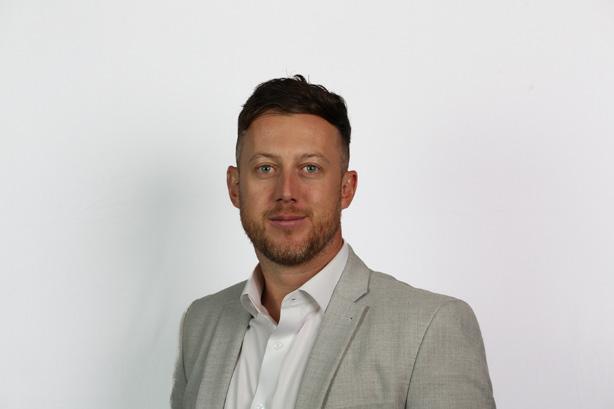
Alasdair Hall-Jones, Global Director

02 A Word From Our Partner
Focusing the spotlight on innovation
We live in a time where success in business requires innovation and marketing to work hand - in - hand. Marketing needs innovation as a driving force for differentiation, while innovation teams need marketing’s knowledge of customers and markets to guide their work and turn it into competitive advantage.
Increasingly, innovation means working with data and digital technology, hence this report explores the evolving role of marketing as it intersects with these areas, and with creativity. It zooms in on the unique opportunities and challenges of the MENA region, featuring perspectives from some of its most influential marketers and brands.
I had the pleasure of spending many hours with marketing leaders from across a range of sectors, interviewing them about their world and regional perspectives across a myriad of topics, and their views on innovation.

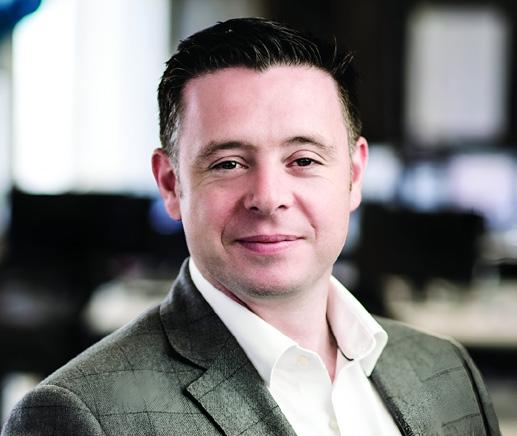
Developed in partnership with The Marketing Society, this report represents a collective effort to capture and share leading perspectives on innovation. At The Trade Desk we are committed to shaping the future of advertising for the benefit of the entire industry and collaborations like these are a great way to move the needle forward. With its rapid digital adoption and substantial growth in digital advertising, the MENA region represents an exciting and dynamic digital landscape that fosters innovation.
All the conversations I have had were nothing less than inspiring, touching on so many elements of innovation. For example, with Etihad, we looked at innovation in terms of load capacity and brand while with Majid Al Futtaim we focused on the customer experience and satisfaction, all through the lens of a marketer’s ownership. This to me reflects the growing role of marketers in companies through the value chain and within leadership decisions.
One of my favourite comments in the report came from our interview with Her Excellency(H.E) Nouf Mohamed Al-Boushelaibi, former Executive Director of Strategic Marketing and Communications at the Abu Dhabi Department of Culture and Tourism. She talked about the innovation journey she and her team have been on for the last three years in terms of learning to sail. And she said the strongest sailors are the ones who have been through the storms, and they are the ones that you want to go out to sea with, and to learn from.
All our interviewees have been through some storms in their careers, and they have come out stronger and wiser. I hope that reading their thoughts will inspire you to take action in your own role, and to apply their strategies to shape your own approach to innovation.
Terry Kane, Managing Director MEA
03 Who’s Who
Meet the marketing leaders
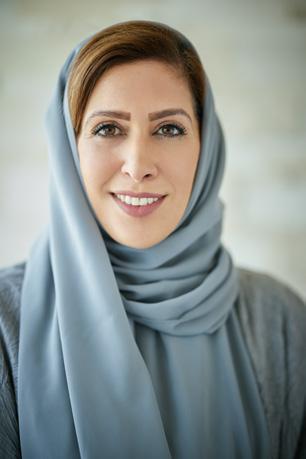
H. E. Nouf Mohamed
Al-Boushelaibi
Former Executive Director of Strategic Marketing & Communications, Abu Dhabi Department of Culture & Tourism
Al-Boushelaibi’s mandate is to share Abu Dhabi with the world, delivering and enabling excellence in integrated communications and unified storytelling for Department of Culture and Tourism(DCT) and its stakeholders. She has guided a rebrand of both the organisation and Abu Dhabi as a destination, unifying culture and tourism marketing and communications in the emirate, and successfully launched Experience Abu Dhabi brand, positioning the emirate globally as a unique and enriching cultural and entertainment destination.

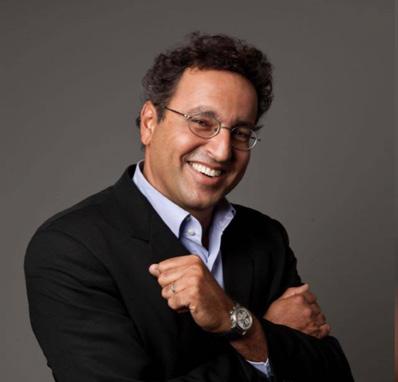
Charles Awad, Chief Brand Officer, Majid Al Futtaim - Holding
Before joining DCT Abu Dhabi, Al-Boushelaibi was a board member of Experience Hub, and Director of the Destination & Marketing Management Department at Miral, where she shaped the corporate narrative and culture, drove the global destination strategy and oversaw the overall Visitor Experience strategy for Yas Island. Prior to that she was Head of Corporate Communications for Abu Dhabi’s Water & Electricity Regulation and Supervision Bureau where she pioneered a consumer centric approach to the organisation’s strategy and communications.
Charles is responsible for partnering with the businesses to define the Majid Al Futtaim group-wide brand agenda, designing and delivering strategies that strengthen their brands and drive customer lifetime value. As a steward for the Group’s Reputation Capital, he leads brand building across the group in the areas of brand strategy, communications, innovation, loyalty, customer engagement and experience. He also leads the development of strategies and solutions to enable the effective deployment of marketing investments. Lastly, Charles is responsible for the Majid Al Futtaim corporate brand and leads Group wide media and company wide marketing partnerships.
Who’s Who
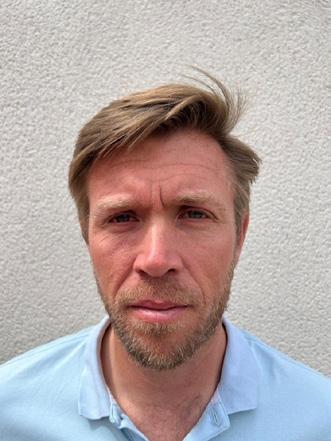
Chantry, Chief Growth Officer, West + East Emerging Markets, Kraft Heinz
Steve has worked in Consumer Packaged Goods for the past 20 years, focusing in Marketing and Commercial roles within iconic food brands (Cadbury, Birds Eye, Heinz). During the last eight years, he has worked for Kraft Heinz, initially as CMO in the UK & then moving to Dubai to lead emerging markets marketing & R&D. He is a self-proclaimed condiments fanatic, and blessed to spend his days bringing more of these delightful tastes to the consumers across emerging markets.
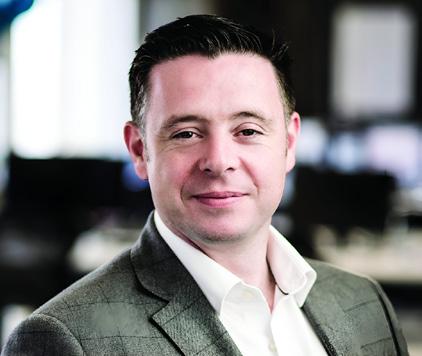
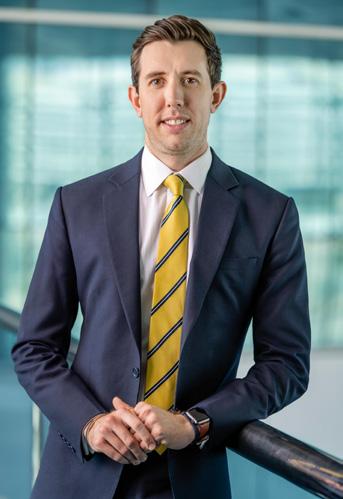
From rollercoasters to recliner seats, George has worked across leisure, tourism and aviation industries over the last 12 years, leading transformative brand and customer experience initiatives that push the boundaries of innovation. With a career spanning theme parks, destination marketing, and premium airline experiences, George brings a unique perspective on how to blend storytelling, technology and design to delight customers and drive loyalty. Whether launching world-first attractions or reimagining the future of travel, George is passionate about creating moments that matter and making bold ideas fly.
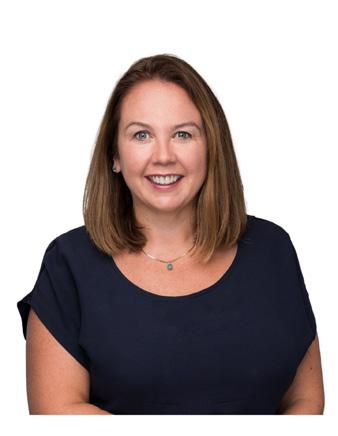
Aimee has worked for HSBC for over 12 years, in various roles spanning communications, brand and marketing. She has also worked as CMO for Mashreq, set up a side hustle in web3 community building, and developed a slight obsession with growing fruit and veg in a compound garden in the desert.
Steve
George Paige, Global Head of Brand, Etihad Airways
Aimee Peters, Regional Head of Brand, Partnerships & B2B Marketing, HSBC MENAT
04 Introduction

We asked our leaders to discuss five topics:
Where does marketing sit within innovation? Should it be brought in from the beginning, or further down the line?
How do you instill a culture of innovation in your team? What are the key elements: freedom to fail, a growth mindset, performing 1% better every day, etc.
How much time and resource should a business spend on innovation? How do you find the balance between technologies ‘shiny new toys’ and the need to deliver on the basics of marketing?
What innovations are sparking your interest for the future? Where are the big wins going to come from for marketers?
The future of marketing. Where do you see the future of the industry? What does the Chief Marketing Officer(CMO) of the future look like?
vation in business is that the term means different things from sector to sector. It can even differ from company to company in each sector.
This was a point made by Steve Chantry from KraftHeinz. As he said, “in some industries, innovation means being in a state of constant renewal. For others, it is more about leveraging what they have built, and modernising it for tomorrow.”
“Food and beverage tends to be more in the latter camp, so innovation is not the be - all and end-all for us, but it is an important part of what we do.”
In contrast, Aimee Peters describes innovation as being “absolutely integral” to HSBC. But she also noted a real change in internal attitudes driven by the rise of fintech start-ups in 2012-13.
Marketing and innovation: Where do they sit in relation to each other?
One of the difficulties in talking about inno-
“The rise of the fintechs prompted a new way of fostering innovation at HSBC. A global division was created focused on identifying key use cases; staying close to industry trends but also ensuring relevance to our business.”
Not only do companies have different approaches to innovation, but so do their marketing departments. For Chantry, innovation sits at the beginning of the process and is owned by marketing.
“I look after what we call growth, which includes both marketing and Research & Development(R&D) ,” he explained. “We combine them intentionally, because they are left-hand and right-hand. Without one, the other can not function.”
Chief Growth Officer, West + East Emerging Markets, Kraft Heinz At HSBC, it is almost the opposite. The bank’s marketing team works to highlight the successes of the innovation team and help it build connections. But the bulk of marketing’s work comes once a use-case has been defined and the project is under way.
“Our customers expect an accelerating level of service and speed which can only be delivered using cutting-edge technologies,” Peters said. “But trust and speed do not sit well together. That means there is a role for us to maintain and protect the trust customers have in the brand, as well as in our ability to look after their money.
“Brand communications around these elements also need to keep pace with our investments in this wider innovation space, so that when we talk about something very advanced, like quantum or tokenised gold, it is not completely unbelievable we would be doing that.”
Charles Awad, Chief Customer Officer at Majid Al Futtaim, echoed this point.“Innovation needs to have a plan to get to a certain level of awareness among the right group of people, and to put investment behind that. You have to make sure that innovation is supported, because very often you innovate, you launch and you forget, which is a disaster.”
Instilling a culture of innovation: What do they look like?
Do you have one?
“Culture is the cornerstone of innovation. Do you have a culture that has the ability or the resource to take on innovative new technologies? Or are you so busy doing the same old everyday that you lose sight of who you are trying to be?”
That is the view of George Paige, Global Head of Brand at Etihad Airways. So what does an innovation culture look like, and how can you create it?
The first step, according to Charles Awad, is to establish the need for change within the organisation, and to mobilise everyone behind that need. Equally essentially, the business needs to establish ground rules for innovation. It needs to think about innovation as a way of reinforcing the brand and its core equity. For Majid Al Futtaim, it also meant being more rigorous and disciplined in the way it planned, designed and built innovation.
“Innovation starts with understanding the customer and the competition,” Awad said. “You cannot say that somebody sitting at a desk on a desk in Dubai is going to come up with all the ideas. When I worked at P&G, the best ideas came from front-facing beauty consultants who met customers every day.”
Her Excellency(H.E) Nouf Mohamed Al-Boushelaibi is former Executive Director of Strategic Marketing and Communications, Abu Dhabi Department of Culture and Tourism. She believes it is also crucial to encourage staff not to censor themselves when coming up with ideas.
“There are always going to be innovations that are aligned with our business and that we need to meet our objectives. But are those going to be the ones that push us and set us apart?” she asked. “The challenge for me as a leader is getting my team to always think of the
disruptive innovations, because those are the ones that will make the difference.”
“The challenge for me as a leader is getting my team to always think of the disruptive innovations, because those are the ones that will make the difference.” – Her Excellency(H.E) Nouf Mohamed Al-Boushelaibi, former Executive Director of Strategic Marketing and Communications, Abu Dhabi Department of Culture and Tourism.
Now, whenever Al-Boushelaibi’s team is pitching ideas to her, she asks them to come up with three options.
“I ask for one that is ordinary, another they think they believe in, and then I want a curve ball. With just that word you open them up beyond their existing limitations. And I will tell you this, nine times out of 10 that curve ball is what moves us ahead.”
This approach highlights another key element of a culture of innovation; the acceptance of risk. As Al-Boushelaibi puts it, you have to give the team the chance to experiment and to fail, knowing that failure will provide lessons on how to move forward in the future. But having ideas and the structure in which to development them is only half the battle. As Etihad’s Paige points out, you have to be able to communicate the results across the rest of the organisation. And have them accepted.
“Innovation might give you the red flag, but have you got the relationships that mean you can fix a problem as quickly as possible?”
That is the difference between an organisation that is successful and one that is not. It can communicate what it is being told through innovation.” This idea is also central to The Hongkong and Shanghai Banking Corporations(HSBC) approach, as Peters explained.
“What we do within the marketing team is test and learn, and then roll out at scale. Within our team we have employee groups tasked with looking out for cool things we might want to test, with thinking about how we might want to apply them. But they are not doing it in silos. The ideas come to the global marketing leadership team, they are discussed, and we think about where the use-cases might be. Then we decide what to invest in.”
“The ideas we back are then tested in-market. We do the testing where the data allows, where the tech is in place, or where the use-cases come from. But it gives us the ability to learn how things would work in the HSBC context. We try and put a lot of rigour around the tests so that we can invest in the ones that will deliver the greatest impact to the most teams.”
How much time and resource should a business spend on innovation? How do you find the balance between technology’s ‘shiny new toys’ and the need to deliver on the basics of marketing?
The flip-side of developing a culture based on taking risks and failing fast is knowing when to pursue the latest technology, and how much to spend doing so.
As Steve Chantry at KraftHeinz pointed out, there are different schools of thought on this subject. He leans towards a conservative view, focusing on what he calls core innovation.
“That means leveraging the things you are good at into places where the growth will come from. It is very tempting and sexy to go into things that are very different. We have all tried it, but the success rate tends to be quite low. And you often need to reallocate a high level of resources, potentially to the point where you can lose your core business. That’s why constant reinvention is such an important principle.”
“But how it plays out is different for each company. If you are Apple, you have to relaunch your iPhone proposition every year, hence we are now on iPhone 16. For us, there is no Ketchup 16. But of course we are constantly renovating the proposition. We have moved away from glass bottles, for example. We have reduced sugar and salt.”
Chantry sees marketing’s role as finding areas where the brand has the credibility to innovate, and then to find the incremental improvements that will deliver growth.
Her Excellency(H.E) Nouf Mohamed Al-Boushelaibi is much less risk-averse. She agrees that an organisation needs to align its innovation projects with its growth plan. But she also believes businesses need to continuously harness disruptive, innovative ideas.
“If you really want to compete and have at least a chance of winning. You have got to take risks.”
The way to resolve this seeming contradiction, according to Charles Awad at Majid Al Futtaim, is through measurement and modelling.
“We need to deploy our brand building investments in the wisest possible way, to deliver the greatest Return on Investment(ROI) and impact,” he said. “So we have made a huge effort on measurement frameworks, how we measure impact and whether our experience is superior to that of competitors.
“It is also a complete shift in the way we do attribution modelling behind campaigns. Marketing needs modelling in place to make better investments. And all of this has helped make our conversations a lot more fact-based and impact-based.”
Awad explained how he is rolled out an innovation framework that calls for a business case for every proposed innovation. How is solving a customer’s problem? How does it create strategic differentiation versus competitor?
“We now have a very structured way of looking at innovation and delivering it. And it is helping people think before they do the sexy new thing,” he said. “Unless innovation is rooted in true customer needs and jobs to be done, in my book there is no innovation.”
“Unless innovation is rooted in true customer needs and jobs to be done, in my book there is no innovation.”
– Charles Awad, Chief Customer Officer at Majid Al Futtaim.
What innovations are sparking your interest for the future? Where are the big wins going to come from for marketers?
Artificial intelligence(AI) dominated our experts’ thinking in this area. They are all using the technology to some extent already. But they are all very aware that they are only at the very beginning of their journey with it. As Steve Chantry at KraftHeinz put it: “In 10 years’ time, generative AI will be yesterday’s news. So as a business and an industry, we need to be at the forefront of it or risk being left behind.”
What was striking was that each of our interviewees are using AI in different ways. Etihad’s Paige is exploring fast-tracking content production capabilities.
“The days where you would get into a studio and do a five-day shoot for a campaign are gone,” he explained. “Our biggest challenge at the moment as a marketing team is producing content for the relevant markets. We fly to over 100 destinations – and more very soon – so we need campaigns in all those markets. And each market has a different truth to it. So how can AI help with that?”
HSBC is also turning to AI to speed up its processes. Peters talked about using the technology to shorten creative approval cycles.
“We find AI-generated imagery gives us a better visualisation of the campaign creative, and cuts time to decisioning,” she said. “We have had quite a lot of big campaigns that have been signed off in principle based on all AI-generated creative. That is giving us a lot of efficiencies, but we are not yet comfortable using AI-generated creative in our external advertising.”
“We’ve had quite a lot of big campaigns that have been signed off in principle based on all AI-generated creative. That’s giving us a lot of efficiencies, but we’re not yet comfortable using a lot of AI- generated creative in our external advertising.”
– Aimee Peters, Regional Head of Brand, Partnerships & B2B Marketing, HSBC MENAT.
As Peters makes clear, realising the benefits goes hand-in-hand with caution about potential risks. HSBC is particularly concerned about oversight of AI-generated content before it reaches customers.
Her Excellency(H.E) Nouf Mohamed Al-Boushelaibi feels brands’ biggest challenge will be changing how they think about these guidelines.
“As owner of Experience Abu Dhabi, I want everything to be on message, but consumers today want to interact with a brand that is more fluid,” she said. “AI is pushing us to be more open in that sense. It is not about being in-your-face, it is about being subtly there and meeting the customer where they are. There is a lot of power there if brands are able to unlock it, and AI can help us do that.”
Etihad’s Paige pointed out another risk. Marketers, he feels, will use the technology to hit their KPIs, which might have little or nothing to do with brand equity.
“That would ultimately compromise your creativity,” he argued. “Our best creative ideas are the ones we spend time curating, building the narrative, and working with our executive on so they buy into them.”
“But tomorrow you could be told to launch a campaign because you need to perform better in a certain market. That could compromise the tonality, the brand positioning, everything. There is constantly this balance
between governing the brand and delivering at pace, and they do not always go hand-in-hand.”
Over at Majid Al Futtaim, Charles Awad is optimistic about the future for both marketing and marketers. He does not see AI taking over our jobs.
“AI is shifting the focus of the marketer to doing more interesting things, more impactful work, and more strategic work,” he said. “That is where it will be a big win when it comes to marketing. It will enable marketers to become a lot more effective in what they do. And it will minimise the wastage in what we do.”
And he echoes the view of Her Excellency (H.E) Nouf Mohamed Al-Boushelaibi.
“AI is also big play in making brands more lovable,” he said. “Through AI, we are able to serve people with the right information and the right content to make them interact with – and love – our brands more.”
The future of marketing: What does the CMO of tomorrow look like?
Our marketing leaders were unanimous. the “why” of marketing will stay the same in the future, while the “how” will change dramatically.
KraftHeinz’s Chantry added two areas beyond marketing itself that marketers will need to master in the future; business and digital.
“The great marketers in my business combine strong marketing thinking with a very powerful consumer understanding, together with the knowledge of how to get stuff done,” he said. “That is things like prioritisation, operationalisation, building teams, engaging and motivating people.
“Then the third thing is that the CMO of tomorrow needs to be both a CMO and a Chief Digital Officer(CDO).
If you are not at the forefront of digital, you cannot succeed as a CMO in the future. That does not mean the core principles of being a CMO have changed, it is just the tools that we use have evolved.”
Peters at HSBC also stressed the continuing importance of marketing fundamentals as channels continue to fragment. She feels it is more important than ever to have a solid understanding of what brand means, and what your brand fundamentals are.
“As marketers, our role is increasingly going to be understanding and projecting a really clear brand voice and image through our comms,” she said. “We will be creating consistency where there easily could be none.”
“The key questions for marketers will be what’s the overarching brand? What are we building towards? What do we need to be known for? And then how do we prioritise those values through all our platforms, into all our channels, so that they connect and
make sense for the customer.
Both Paige and Al-Boushelaibi at the Abu Dhabi Department of Culture and Tourism stressed the importance of embracing and understanding data.
“Data inputs are going to get even bigger, but it is what we do with them that is going to be important,” Paige said. “Most organisations still have a long way to go in bringing data to the core of marketing decisions. We need to be constantly iterating and improving that.”
And Al-Boushelaibi described the ability to analyse data and drive insights from it as “key to unlocking the power of personalisation and revolutionising marketing in the future.”
But Awad at Majid Al Futtaim warned against losing the ‘art’ of marketing in the rush to embrace the ‘science’.
science,” he said. “You cannot be a marketer without being analytical. Marketers used to be all about the creative and the campaign, but that is not what marketing is. Marketing is analytical and creative. You need the science, but the art part is what the great marketers have. And it is being lost as we move towards performance-driven models.”
Awad also echoed Chantry’s point about coupling marketing knowledge with business know-how. In his view, marketers need to be leaders of the business, because marketing is about fuelling growth.
“Marketing is about winning the hearts, minds and wallets of customers ahead of your competitors,” he said. “When you say, ‘We need to grow by 30%’, this has to come from customers voting for you as opposed to voting for others. That means you are a business person driving a business impact with a business agenda, not with a creative agenda. If you have a creative agenda, you are not a marketer.”
“Marketing has a bit of art and a bit of
Building this tripartite capability would not be easy. Al-Boushelaibi described it in terms of learning to sail.
“I remind all my team members that if you want to learn and grow, you have got to embrace both the calm waters and the storms. But you should really look forward to the storms, because that is where you grow, and you come out stronger on the other side.”
And Paige suggested that at least some of the learning should come from marketers sharing their experiences with each other.
“CMOs should be taking time to chat to other industry professionals, having conversations like this,” he said. “We need to be taking our heads out of the day-to-day to be on the business, rather than in the business.”


05 Conclusions
AsAimee Peters from HSBC put it in her interview, the juggernaut of progress is not going to stop. Technology will change, markets will change and customer expectations will change. The challenge for marketers is to build a culture of innovation capable of responding to these changes faster than competitors.
Steve Chantry at KraftHeinz spoke about this explicitly. He discussed having established a specific operating unit to bring more agility to the way his organisation works. As he said, that does not mean the core principles of marketing have changed. Rather, the tools that marketers use to stay ahead of the curve have evolved.

That puts even more pressure on marketers to understand what those tools can do in the context of the entire business. For example, it is crucial not to mistake the acceleration of processes offered by AI for agility. AI is an incredibly powerful tool, and will only become more so. But, as Etihad’s George Paige noted, faster does not always mean better. If meeting short-term goals faster is detrimental to long-term ambitions or structures, a quick win can turn out to be an expensive defeat. It is about meeting your customers where they are.
Another key idea in our interviews was the changing relationship between marketers and customers. Her Excellency (H.E) Nouf described it as “meeting the customers where they are.” As she described : “It is not pushing ourselves at people. As a marketer, you still need to push your brand. But you also need to understand your customers and the number of ads that are targeted at them. How do you find the balance between your direct marketing and indirect marketing?”
Her Excellen- cy(H.E) Nouf also pointed out that this idea of a more nuanced interaction with customers brings us back to the concept of personalised marketing. It is an idea that dates back to the late 1940s and Lester Wunderman’s invention of direct marketing. Its adoption became more widespread in the 1990s with the advent of the internet, but its full potential has never quite been realized. Now, the combination of big data and AI is on the cusp of making it a reality.
For all these reasons, Paige advocates senior marketers carving out 5 or 10 % of their time for thinking.
05 Conclusions
“Ultimately, integrating AI into the business is going to cause a lot of pain, but it is a long-term view,” he said. “Often that can be quite hard, particularly when you are in the weeds delivering campaigns. So the right leaders need to give themselves time to think about how they can avoid their teams being in the same position in two years time.”
tive enough to survive. Being innovative is an iterative process in itself, he said. You have to keep getting better.
In other words, if you are worried about losing your customers to more innovative competitors, you just have to be quicker at improving than they are.


Paige also had some encouragement for those worried that their organisation is not innova-
Innovation has to be directed
06 Innovation and marketing
Five takeaways

Trying to innovate without an understanding of what customer needs you are trying to address is likely to end up as a waste of time and money. However that does not mean you always have to be conservative in your approach. Sometimes you need the scary, keep - you - awake - atnight innovations to open up new markets, or differentiate yourself from your competitors. You just need to recognise that this sort of innovation is significantly more riskier, and plan accordingly.
Innovation is nothing without communication.
Some interviewees have separate, dedicated innovation units in their business. Others integrate R&D within marketing. However you approach it, it is vital to maintain communication between these teams and the rest of the organisation. It is the only way to ensure your innovation is in the service of the business, and that the business understands and adopts new ideas and approaches the team develops.
You can not have a fruitful innovation partnership without respect.
There are lots of things a partner can bring to the table: an audience, technical skills, a presence in a new market. Regardless of what they bring, they also need to understand and respect your culture and values. If they do not, the
alliance would not feel authentic and would not last long enough to deliver the transformative effects both sides are looking for.
Let your partners help you meet your customers where they are.
We have all heard the numbers about how many marketing messages people see every day. That is why several of our interviewees talk about partnerships being the future of marketing. Think of it as the difference between direct and indirect marketing. You do not necessarily need to be at every touchpoint in your customers’ path to purchase in your own right if your partners can give you a presence there.
Marketing is part art, part science, and all business.
The argument is over. The marketers of the future will need an equally strong grasp of data and technology, imagination and insight. The rise of performance marketing should not blind us to the need for creativity at the top of the funnel. Gut-feeling should never overrule analysis. But we can never forget that our job as marketers is to drive the growth of the business. As Charles Awad of Majid Al Futtaim - Holding says: “As a marketer, you are a business person with a business agenda, not a creative agenda. If you have a creative agenda, you are not a marketer.”

